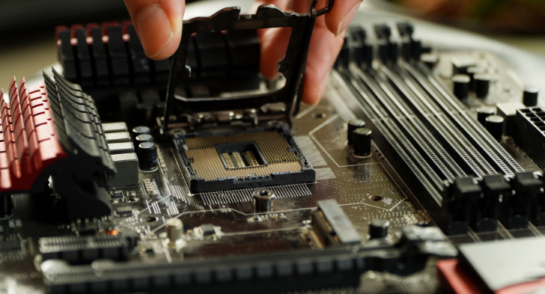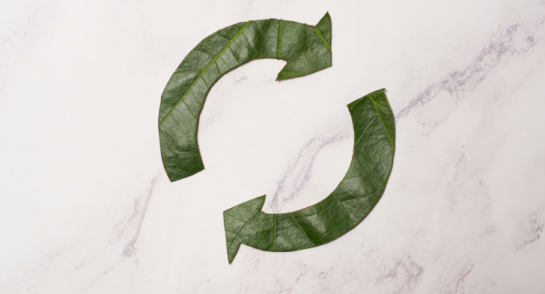A sustainable supply chain is no longer a “nice-to-have.” If your business still sees sustainability as optional, you’re missing a glaring opportunity to improve business performance, shore up your competitive position and satisfy your customers.
In 2019 alone, an estimated 53.6 million metric tons of electronic waste was generated, consisting of, among other metals, silver, gold, copper and aluminum — and this number is set to grow at around 2.5 million metric tons per year. Experts estimate that the value of raw materials from this e-waste in landfill totals around $57 billion.
On top of this, companies are facing environmental supply chain risks that will cost a predicted $120 billion globally by 2026 if unattended, such as:
- Increased severity and frequency of extreme weather
- Increased cost of raw materials
- Increased spending on product innovation due to changing customer demands
- Regulatory changes as the world addresses environmental crises
C-level decision-makers are increasingly under pressure to report on and show progress on their sustainability roadmaps.
This is driven simultaneously by legislators expanding reporting directives — such as the EU’s upcoming Corporate Sustainability Reporting Directive (CSRD) which mandates additional reporting on sustainability — as well as circularity of products by ESG driven capital markets.
On the flipside, an immense opportunity to deliver additional value via sustainably managed supply chains has emerged in recent years. To realize this opportunity, companies need to realign key principles and create a Circular Economy with emerging, service-based business models. This can:
- Help to eliminate waste from our economy
- Keep products and materials in use for as long as possible
- Service inventory that is currently in operation, increasing product durability and use cycles
Ignoring sustainability as a transformative driver to your supply chains isn’t just risky business — it could mean missing out on additional value creation.
So what’s keeping everyone from diving head-first into committing to sustainability?
The answer isn’t simple. There are a number of technological, political and commercial changes for businesses to consider when integrating sustainability.
For example, many enterprises are still only just getting on-board with modern technology such as AI, which can leverage huge amounts of data and make sustainable supply chain management easier. According to Forrester, nearly 60% of company decision-makers still have plans to optimize their sustainability goals through expanding their investment in tech.
Department heads also worry that the transition toward sustainability-first practices will involve a costly, fundamental redesign to processes. While this can hold true for some initial technical overhauls, the truth is that sustainable supply chain management leads to a natural streamlining and optimization across the chain — naturally reducing operational costs.
These different factors can be overwhelming at times — and a lot of decision-makers don’t know where to start.
But, there are some gains you can make to get the ball rolling in the right direction. Companies need to focus on:
- Developing a better parts planning process to reduce the number of unnecessary shipments and parts lost along the way
- Introducing effective parts recovery, refurbishment and reuse to reduce the number of products needed in order to create the same value.
Planning for a sustainable supply chain
One crucial stepping stone to improving the sustainability of your supply chain is effective service-parts planning.
In the past, accurate planning has relied on out-of-date tools, intuition and a bit of luck. Today, companies have vast amounts of data that these methods can’t properly leverage.
The problem with this is that service supply chains operate without full visibility into inventory, real-time demand and delivery frames for ordering parts.
The result? Planning departments are ordering and shipping parts they don’t need, eating into finite resources and increasing material waste, unnecessary spending and frustration in the team.
However, it’s not the planners’ fault. Legacy systems have tied one arm behind their backs and are causing blindness across the parts management process, along with a lack of agility in the face of supply chain disruptions and dynamic customer needs.
Implementing an intelligent planning system that leverages AI can give you a full 360-degree view, and continuously improves your understanding of current and future demand for parts. That lets you plan your stock levels better, so you can avoid the repercussions of:
- Over-estimating demand and ending up with a costly surplus of product
- Under-estimating demand and missing out on sales or failing to meet your SLAs
The right information allows you to make efficient and effective decisions that reduce product waste, transport emissions and extra costs, and contribute to a healthier, more sustainable service supply chain.
Setting up a sustainable recovery process
Product recovery and refurbishment is one of the best ways for any sustainable service supply chain to keep products, parts and materials out of landfill — and get them ready for reuse.
But businesses have traditionally struggled to implement successful recovery processes.
Why? Besides the lack of business models that incentivize product recovery and reuse, several practical obstacles often impede progress:
-
- Disparate data sources that limit companies’ ability to manage the returns process
- Gaps in receipts at warehouses that create confusion
- Lack of standardization in returns policies, which delay the process or cause unnecessary errors – the time required to process these also naturally adds to the costs of managing returns.
The key to getting around these challenges lies in the opportunities offered by new, industry-leading technologies. The greater processing power of purpose-built solutions makes it easy for businesses to rethink the way they maintain and upcycle materials and parts.
These technologies offer much-needed features such as:
-
- Real-time product data, allowing you to get at-a-glance visibility of key performance metrics, as well as updates from field engineers
- A single source for all relevant documentation and parts information, enabling more intelligent decisioning and the ability to identify users’ propensity to return
- 100% accurate returns information, accessible from any device without the need for downloads
This can lead to great sustainability wins. For example, intelligent AI software can accurately predict when a business will require a new part before anything actually goes wrong. And, when a part does fail, it can use intelligent decision-making to identify how components could be repurposed or sold, taking into account transport costs, refurb value and scarcity of components.
The result is lower waste, fewer unnecessary expenses and more sustainable supply chain management.
Pave the way forward with sustainability
While change of any kind comes with upfront costs, working towards a more sustainable supply chain is worth it — as this transformation leads to a host of operational and business benefits, from cost savings over more streamlined and efficient product life-cycles to increased service quality and customer value.
To accelerate your business’s journey to sustainability and to help it prosper into the long-term, you need the right service supply chain solution.
That’s where we come in. Our proprietary technology, OnProcess Agora, uses the best in technology to integrate intelligent planning-as-a-service and asset recovery to transform your supply chain management.
With AI-powered systems capable of pulling valuable insight in real-time, we help you refine your end-to-end service supply chain processes, so you can plan better, deliver faster and recover more effectively.
Want to learn more? Get in touch with us today for a free consultation and demo.
RELATED CONTENT


Infographic: Is anyone using AI and Machine Learning in the Service Supply Chain?




Sign up for updates
Get the latest updates on our new services and fresh content — straight to your inbox.
